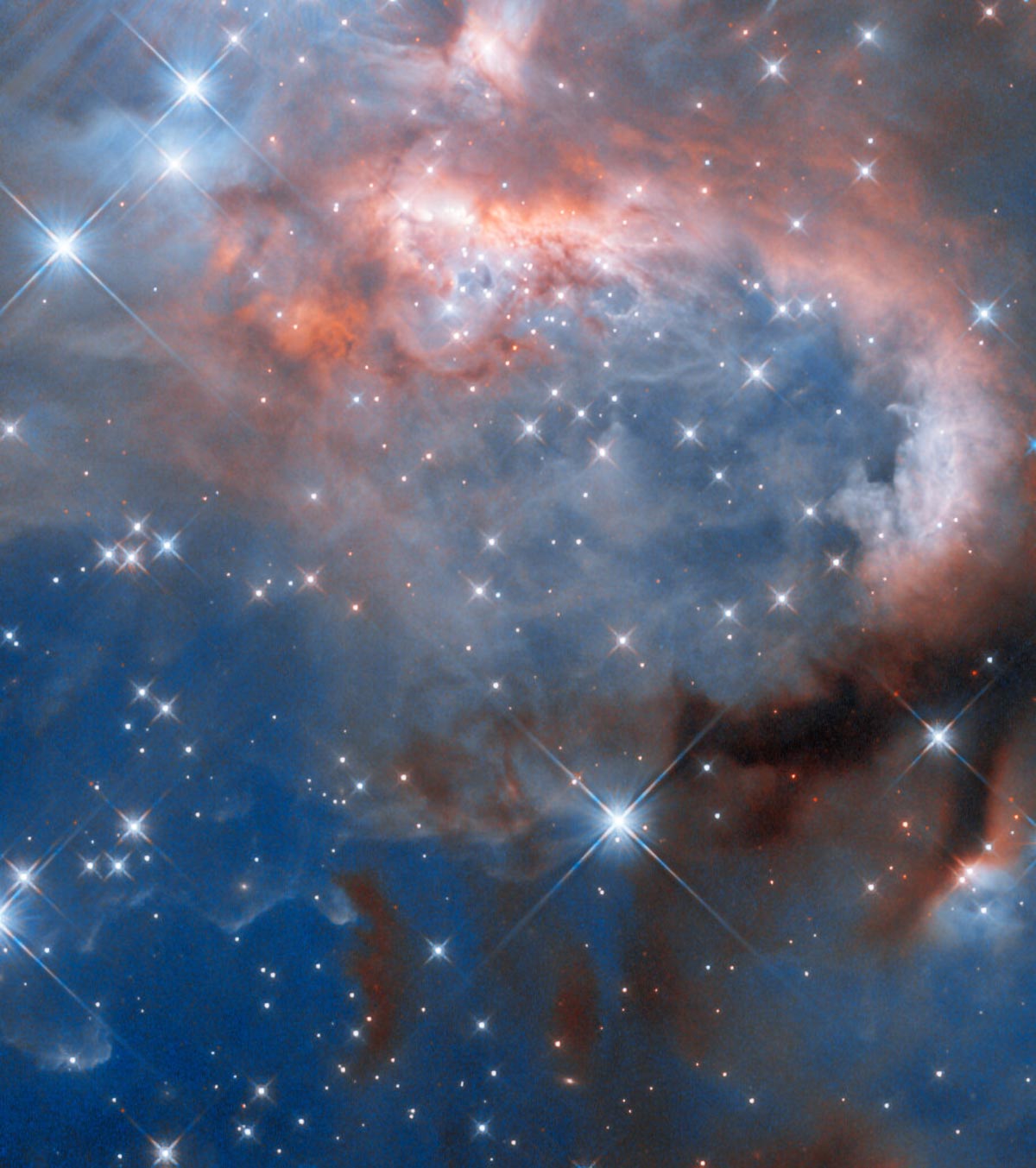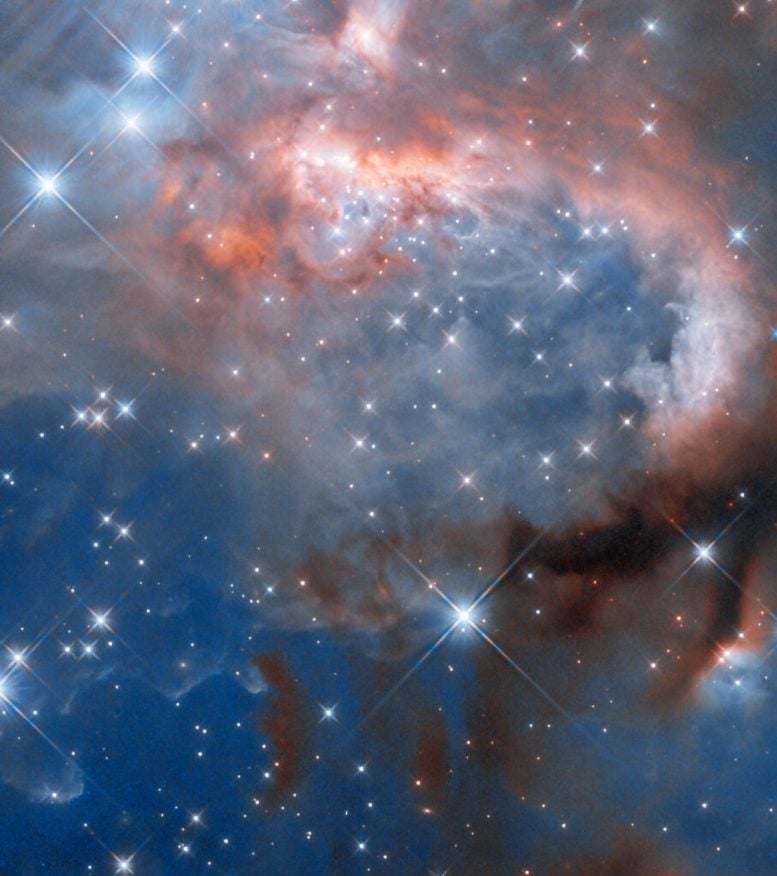

The RCW 7 nebula, featured in this Hubble Space Telescope image, illustrates the transformation of a molecular cloud into an H II region, marked by the emergence of massive protostars. These stars emit ultraviolet light and stellar winds that shape the nebula, with Hubble capturing this process in near-infrared light, revealing the lifecycle of stars and their impact on the surrounding cloud. Credit: ESA/Hubble & NASA, J. Tan (Chalmers University & University of Virginia)
Hubble’s image of RCW 7 reveals massive protostars in the Puppis constellation transforming a molecular cloud into a glowing H II region, showcasing the birth and evolution of stars.
A visually striking collection of interstellar gas and dust is the focus of this stunning Hubble Space Telescope image. Named RCW 7, the nebula is located just over 5,300 light-years away from Earth in the constellation Puppis.
Formation of Stars in Nebulae
Nebulae are areas of space brimming with the raw material needed to form new stars. Under the influence of gravity, parts of these molecular clouds collapse until they coalesce into protostars, surrounded by spinning discs of leftover gas and dust. In the case of RCW 7, the protostars forming here are particularly massive, giving off strongly ionizing radiation and fierce stellar winds that have transformed it into what is known as an H II region.
The Role of H II Regions
H II regions are filled with hydrogen ions — where H I refers to a normal hydrogen atom, H II is hydrogen that has lost its electron. The ultraviolet radiation from the massive protostars excites the hydrogen, causing it to emit light and giving this nebula its soft pinkish glow.
Here Hubble is studying a particular massive protostellar binary named IRAS 07299-1651, still in its glowing cocoon of gas in the curling clouds towards the top of the nebula. To expose this star and its siblings, this image was captured using the Wide Field Camera 3 (WFC3) in near-infrared light.
The massive protostars here are brightest in ultraviolet light, but they emit plenty of infrared light which can pass through much of the gas and dust around them and be seen by Hubble. Many of the other, larger-looking stars in this image are not part of the nebula, but sit between it and our Solar System.
The Lifecycle of a Molecular Cloud
The creation of an H II region marks the beginning of the end for a molecular cloud. Over only a few million years, the radiation and winds from the massive stars gradually disperse the gas — even more so as the most massive stars come to the end of their lives in supernova explosions. Only a fraction of the gas will be incorporated into new stars in this nebula, with the rest being spread throughout the galaxy to eventually form new molecular clouds.
Reference: “Dynamics of a massive binary at birth” by Yichen Zhang, Jonathan C. Tan, Kei E. I. Tanaka, James M. De Buizer, Mengyao Liu, Maria T. Beltrán, Kaitlin Kratter, Diego Mardones and Guido Garay, 18 March 2019, Nature Astronomy.
DOI: 10.1038/s41550-019-0718-y